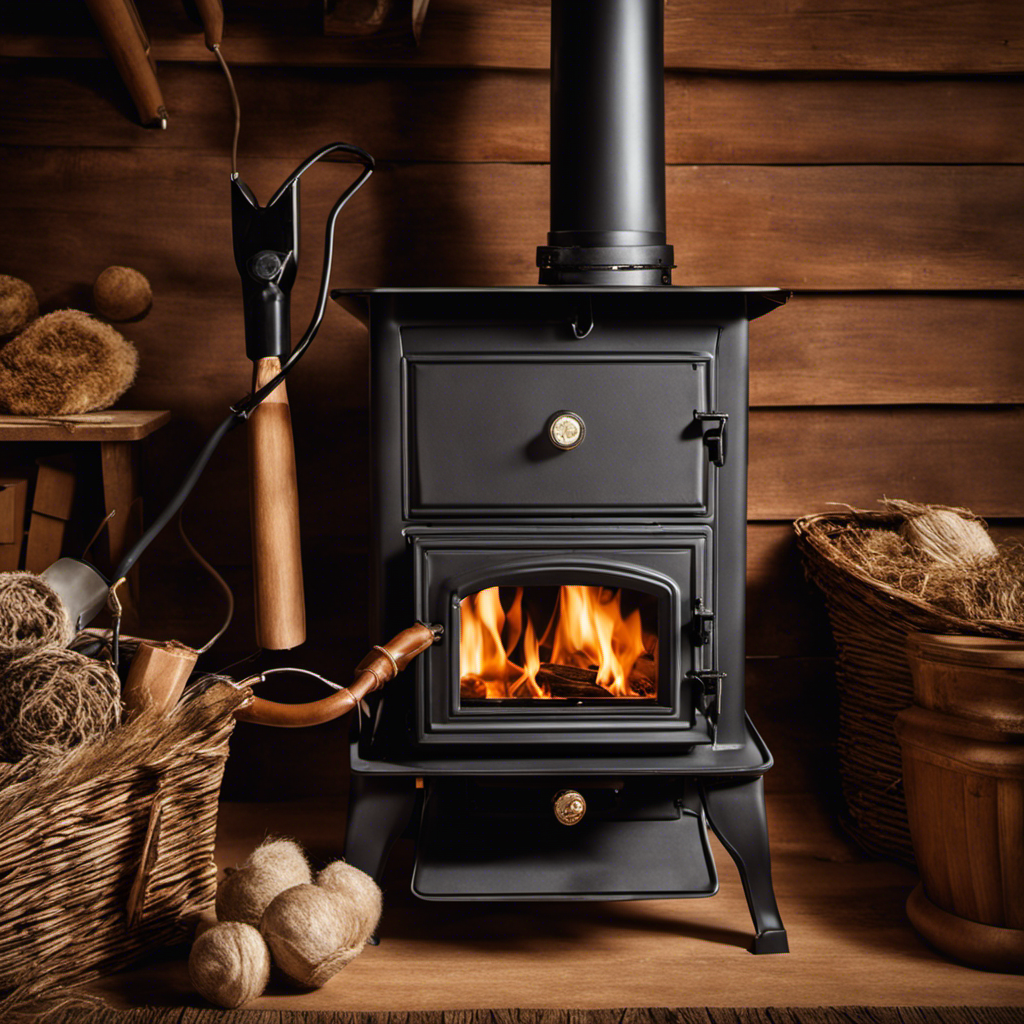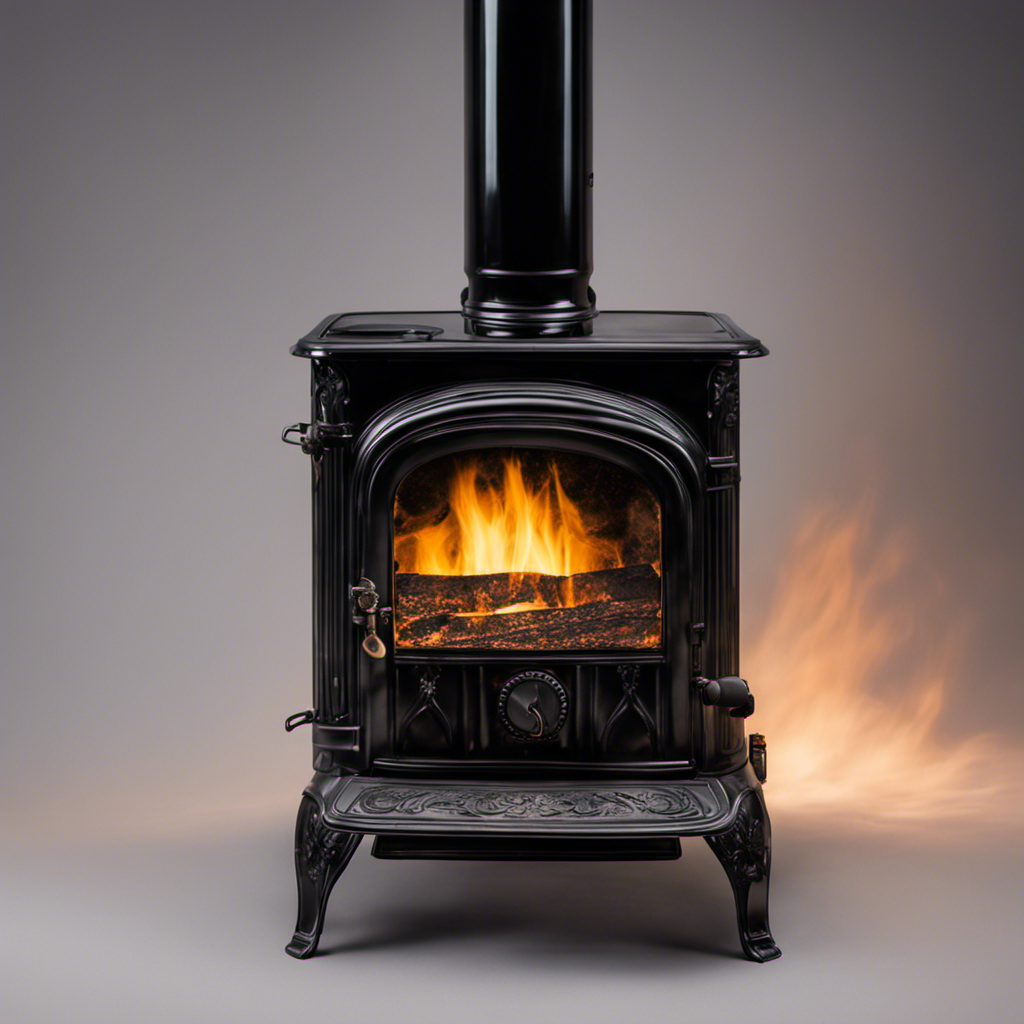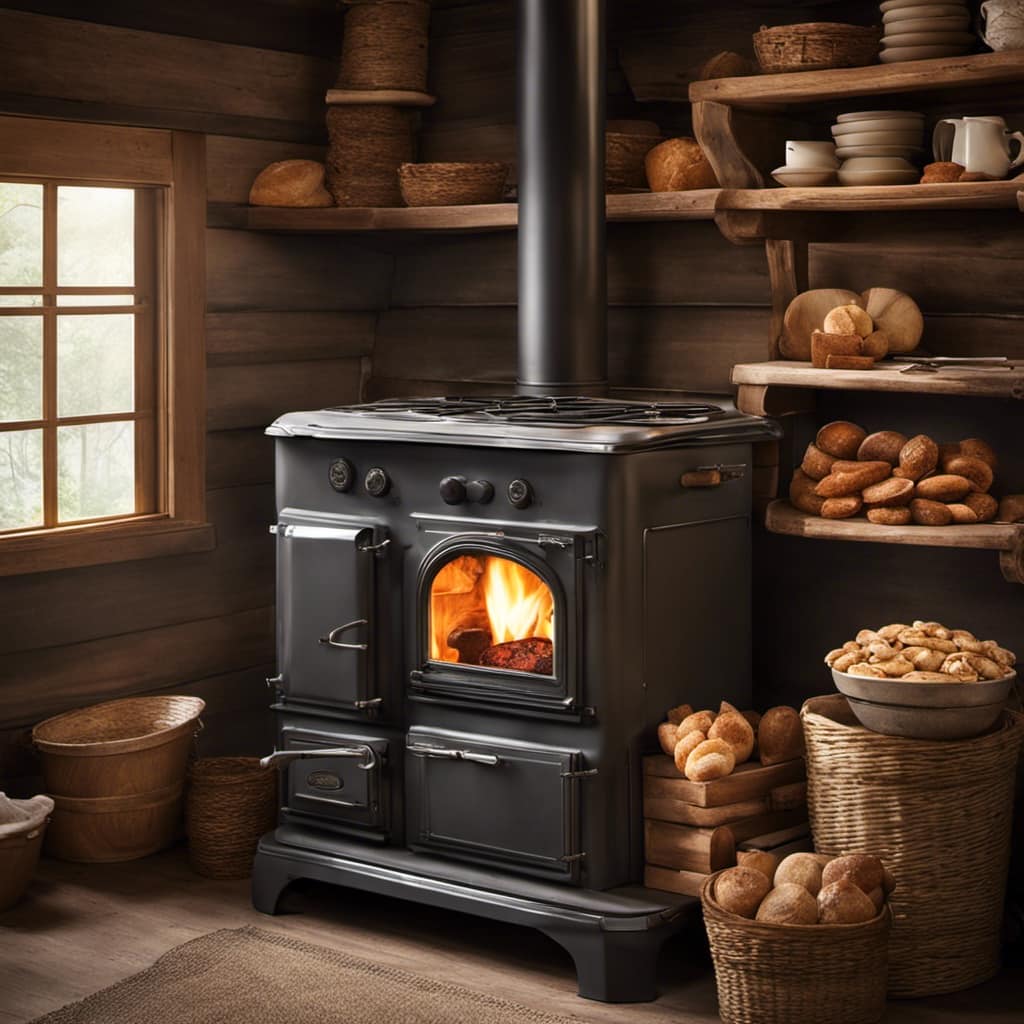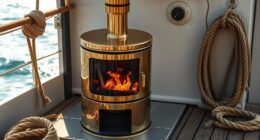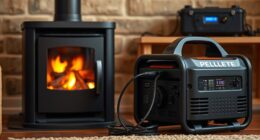As a fan of DIY projects, I have always been attracted to the cozy ambiance of a wood stove. However, I quickly learned that adding a blower was essential for maximizing its efficiency.
In this step-by-step guide, I’ll show you how to choose the right blower, gather the necessary tools, and prepare your wood stove for installation.
With a little know-how and some elbow grease, you’ll be able to enjoy the cozy heat of your wood stove even more. Let’s get started!
Key Takeaways
- Consider the size and heat generation of the wood stove when choosing a blower
- Determine the appropriate CFM rating for effective heat distribution
- Take into account the noise level and energy efficiency of the blower
- Ensure compatibility with the wood stove model
Choosing the Right Blower for Your Wood Stove
I need to find the perfect blower for my wood stove.
When comparing different types of blowers for wood stoves, there are several factors to consider.
First, I need to determine the size of my wood stove and the amount of heat it generates. This will help me choose a blower with the appropriate CFM (cubic feet per minute) rating to effectively distribute the heat throughout the room.
Additionally, I need to consider the noise level of the blower, as some models can be quite loud. Energy efficiency is another important factor, as it will impact both the cost of running the blower and its impact on the environment.
Lastly, I need to ensure that the blower is compatible with my wood stove model and can be easily installed.
Now that I’ve narrowed down my options and selected the right blower, I can move on to gathering the necessary tools for installation.
Gathering the Necessary Tools for Installation
After researching the installation process, I realized that I need to gather my toolbox and the necessary tools to properly install the blower. It’s crucial to have the right tools to ensure a successful installation and avoid common blower installation mistakes. Here is a table outlining the essential tools you’ll need for the job:
| Tools Needed | Purpose |
|---|---|
| Screwdriver | To remove the stove panels |
| Drill | For creating holes |
| Wrench | To tighten bolts and nuts |
| Level | To ensure proper alignment |
Once you have gathered these tools, you can proceed with the installation. Remember to refer to the manufacturer’s instructions for specific steps. It’s also important to note some maintenance tips for wood stove blowers. Regular cleaning, lubrication, and inspection of the blower will help prolong its lifespan and ensure its efficient operation. By following these steps and taking proper care of your blower, you can enjoy the benefits of a warm and cozy home during the colder months.
Preparing Your Wood Stove for the Blower Installation
Before installing the blower, it’s important to prepare the wood stove by cleaning the surface and removing any debris. Here’s a step-by-step guide on how to prepare your wood stove for the blower installation:
-
Clean the surface: Start by wiping down the exterior of the wood stove using a damp cloth. Remove any dirt, dust, or grease that may interfere with the installation process.
-
Remove debris: Carefully inspect the stove’s interior and remove any ashes, soot, or other debris. This will ensure proper airflow and prevent any blockages that could lead to safety hazards.
-
Check the stovepipe: Examine the stovepipe for any signs of damage or corrosion. Replace any worn-out sections or repair any leaks before proceeding with the blower installation. Safety is paramount, and a faulty stovepipe can lead to smoke leaks or even fires.
Step-by-Step Guide to Installing the Blower on Your Wood Stove
How can I efficiently install the blower on my wood stove?
Installing a blower on a wood stove can greatly improve its efficiency and heat distribution. However, there are common mistakes that people make during the installation process, which can lead to issues later on.
Here is a step-by-step guide to help you install the blower correctly and troubleshoot any installation issues that may arise.
-
Begin by ensuring that the wood stove is completely cool and disconnected from any power source.
-
Locate the blower kit that’s compatible with your specific wood stove model.
-
Carefully read the manufacturer’s instructions and gather all the necessary tools and materials.
-
Remove any existing components or obstacles that may interfere with the blower installation.
-
Position the blower unit in the designated location, usually at the rear or side of the wood stove.
-
Secure the blower unit using the provided screws or brackets, making sure it’s firmly attached.
-
Connect the blower unit to the power supply, following the instructions provided.
-
Test the blower to ensure that it’s operating correctly and distributing heat evenly.
-
If any issues arise, such as unusual noises or lack of airflow, refer to the troubleshooting section of the manufacturer’s instructions.
-
If troubleshooting doesn’t resolve the issue, consult a professional for further assistance.
Testing and Adjusting the Blower for Optimal Performance
I can test and adjust the blower to ensure optimal performance by monitoring its airflow and adjusting the speed accordingly. Here’s a step-by-step guide on how to troubleshoot common blower issues and adjust the blower speed:
-
Check for blockages: Inspect the blower and air ducts for any debris or obstructions that may be restricting airflow. Clear any blockages to allow for proper air circulation.
-
Adjust blower speed: Locate the blower speed control switch or dial. Gradually increase or decrease the speed to find the optimal setting. Keep in mind that higher speeds may generate more noise.
-
Test and observe: Once you’ve adjusted the blower speed, carefully observe the airflow and listen for any unusual noises. Make note of any improvements or issues that arise.
Frequently Asked Questions
How Much Does a Blower for a Wood Stove Typically Cost?
The cost considerations for a blower for a wood stove depend on various factors, such as brand, size, and features. However, the benefits of using a blower include improved heat distribution and increased energy efficiency.
Can I Install a Blower on Any Type of Wood Stove?
Installing a blower on a wood stove has its pros and cons. The advantages include increased heat distribution and improved efficiency. However, the disadvantages depend on the type of wood stove, as some may not be compatible or may require modifications.
Is It Necessary to Have Prior Experience With Electrical Work to Install a Blower on a Wood Stove?
It is not necessary to have prior experience with electrical work to install a blower on a wood stove. However, it is important to follow safety guidelines and consult the manufacturer’s instructions.
Do I Need Any Additional Permits or Approvals Before Installing a Blower on My Wood Stove?
Before installing a blower on my wood stove, I must determine if any permits or approvals are required. It is important to consider the installation cost, necessary electrical experience, and ensure the blower usage is safe and compliant.
Can I Use the Blower on My Wood Stove Even When the Stove Is Not in Use?
Yes, you can use the blower on your wood stove for other purposes. However, using the blower when the stove is not in use may affect energy consumption.
Can a Wood Stove Door Seal Replacement Help with Installing a Blower?
When it comes to installing a blower for your wood stove, a crucial step is to replace the door seal. A worn-out door seal can cause air leakage, reducing the effectiveness of the blower. By using a replace door seal wood stove, you can ensure a tight seal, optimizing the blower’s performance and enhancing heat distribution in your home.
Conclusion
In conclusion, installing a blower on your wood stove can greatly enhance its performance and efficiency. By choosing the right blower, gathering the necessary tools, and following the step-by-step guide, you can easily complete the installation process.
Once installed, don’t forget to test and adjust the blower for optimal performance. So, go ahead and turn up the heat with your newly installed blower, and let the cozy warmth envelop your living space like a toasty embrace on a chilly winter’s night.
Growing up surrounded by the vast beauty of nature, Sierra was always drawn to the call of the wild. While others sought the comfort of the familiar, she ventured out, embracing the unpredictable and finding stories in the heartbeat of nature.
At the epicenter of every remarkable venture lies a dynamic team—a fusion of diverse talents, visions, and passions. The essence of Best Small Wood Stoves is crafted and refined by such a trio: Sierra, Logan, and Terra. Their collective expertise has transformed the platform into a leading authority on small wood stoves, radiating warmth and knowledge in equal measure.

